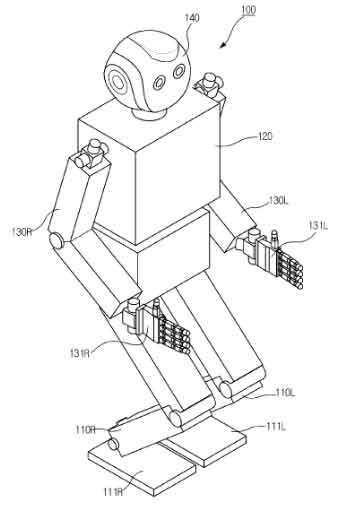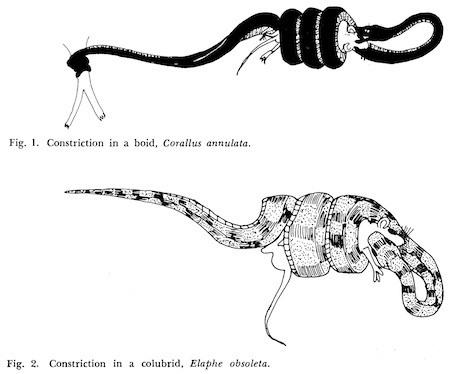Marc Abrahams's Blog, page 313
August 15, 2015
Why We Move Our Eyes While Trying to Remember?
Does this study seem familiar to you? Did you move your eyes while trying to remember?
“Why do we move our eyes while trying to remember? The relationship between non-visual gaze patterns and memory,” Dragana Micic, Howard Ehrlichman and Rebecca Chen, Brain and Cognition, 2010 Dec;74(3):210-24. The authors, at City University of New York (CUNY), report:
“reasons for their appearance remain obscure.”

August 14, 2015
On Biting in Sport(s)
The clip above shows (amongst others) the now-famous 2014 FIFA World Cup biting-incident featuring Luis Suárez. One might ask, and indeed some have, what are the ethical and philosophical implications of such an act? Bearing in mind that :
“A prohibition against biting an opponent is not included in the rules of most contact sports, including football […]”
Doc. PhDr. Irena Parry Martínková and Professor Jim Parry of the Faculty of Physical Education and Sport, Charles University in Prague, Czech Republic, contemplate such things in a new paper for the scholarly journal Sport, Ethics and Philosophy : ‘On Biting in Sport : The Case of Luis Suárez’.
They continue;
“Nowhere in the rules of football does it prohibit the goalkeeper from carrying and using a machine gun, presumably because everyone can see that this would be the end of football as we know it, and no-one who wanted to play football would dream of doing it.”
And, furthermore for balance, it’s noted that there are some sports which not only don’t prohibit biting, but actively sanction it.
“Biting is [also] included in Kino Mutai, known as ‘the art of biting and pinching’, which is a subcategory of Filipino martial arts, but even here biting is rule-constrained, since the rules of Kino Mutai specify how to bite and exactly where to bite, in order to achieve a submission; and biting skills are subordinate to wrestling skills, especially grip-strength skills. ” [Note: a.k.a. Kinamotay]
The paper may be read in full here.
Also see: Further ethical/philosophical soccer-related incidents for consideration. (from: The Independent, June 25th, 2015)

August 13, 2015
Dr. Samsung will see you now (new patent)
 Samsung Electronics Co., Ltd. of Korea has just received a US patent for a ‘Vital sign measurement robot and control method thereof’.
Samsung Electronics Co., Ltd. of Korea has just received a US patent for a ‘Vital sign measurement robot and control method thereof’.
The company’s humanoid(ish) walking robot can not only measure a patient’s basic vital signs, (pulse rate, etc) but can also perform a series of complex medical examinations.
Here he/she/it is performing an electroencephalography (EEG) procedure on a patient.
“A vital sign measurement robot which automatically measures vital signs, and a control method thereof. The vital sign measurement robot includes an input unit to receive vital sign measurement instructions, an image recognition unit to detect a distance between the robot and a person, vital signs of whom are to be measured, and a measurement portion of the body of the person, when the vital sign measurement instructions are received, a control unit to move electrodes provided on hands so as to locate the electrodes at the measurement portion of the body of the person, when the distance between the robot and the person and the measurement portion of the body of the person are detected, and a vital sign measurement unit to measure a vital sign, when the electrodes are located at the measurement portion of the body of the person.“
US patent 9,101,324, August 11, 2015. The inventors are:
Park; Heum Yong (Suwon-si, KR), Kim; Yong Jae (Seoul, KR), Lee; Youn Baek (Suwon-si, KR), Kim; Jeong Hun (Suwon-si, KR), Roh; Kyung Shik (Seongnam-si, KR), Kwon; Young Do (Yongin-si, KR)

August 12, 2015
A big thank-you to Austrian Airlines
I want to personally thank Austrian Airlines for being so charming. Austrian Airlines has now gone six months declining — charmingly — to refund the air fare for a blizzard-cancelled fight.
“We must respectfully decline,” Austrian Airlines wrote us in their latest email, to send the refund they explicitly promised in February. The flight was going to be my return home after participating in a delightful science/social event in Vienna. The blizzard shut down pretty much every flight in the northeast US. Austrian Airlines subsequently shut down every inquiry about when they would send the refund for my cancelled flight.
 Austrian Airlines boasts the slogan “the charming way to fly”. I can but celebrate the airline’s chilly, blizzard-enhanced corporate charm.
Austrian Airlines boasts the slogan “the charming way to fly”. I can but celebrate the airline’s chilly, blizzard-enhanced corporate charm.
I hope everyone has a chance to appreciate the depth of The Charming Way to Fly!

Podcast #24: The longest oath
The longest courtroom oath, the Okajima/Fujinami navel lint removal invention, global BOOM (from colonoscopies), the year of lint, preference mapping of cheese sticks, periodic leg movements during sleep in Japan; and some dirty, rotten, and dammed [sic] imperfections all turn up in this week’s Improbable Research podcast.
Click on the “Venetian blinds” icon — at the lower right corner here — to select whichever week’s episode you want to hear:
SUBSCRIBE on Play.it, iTunes, or Spotify to get a new episode every week, free.
This week, Marc Abrahams tells about:
The longest oath. ( Burmah and the Burmese , Kenneth R.H. Mackenzie, Geo. Routledge & Co., London, 1853. Featuring a dramatic reading by Robin Abrahams.)
The Okajima/Fujinami navel lint removal invention. (“Body recessed portion cleaning agent,” patent application (US #2007/0041923) filed by Takao Okajima and Susumu Fujinami. Featuring dramatic readings by Chris Cotsapas .)
Global BOOM. (“Unusual Complication in Electrosurgery: Explosion of Gases in the Cecum During Operation of Cecal Fistula” [article in Italian], G. Pezzuoli and C. Ghiringhelli, L’Ospedale Maggiore, vol. 40, no. 9, September 1952, pp. 443-6. / “Pneumatic Explosion of the Cecum in Patients with Carcinoma of the Colon” [article in Spanish], N. Antonelli and E. Borenstein, Prensa Medica Argentina, vol. 51, October 23, 1964, pp. 999-1002. / “Intestinal Gas Explosion As a Rare Cause of Traumatic Colon Perforation” [article in German], F.J. Stucker and H. Molzberger, Chirurg, vol. 45, no. 8, August 1974, pp. 373-5. / “Explosions of Colonic Gas,” B.H. Rogers, New England Journal of Medicine, vol. 291, no. 20, November 1974, p. 1089. / “Intestinal Explosion During the Use of Diathermy” [article in Danish], N.J. Olsen and V. Berg, Ugeskrift for Laeger, vol. 140, no. 31, July 1978, pp. 1890-1. / “Gas Explosion During Diathermy Colotomy,” N. Shinagawa, et al., British Journal of Surgery, vol. 72, no. 4, April 1985, p. 306. / “Diathermy-Induced Gas Explosion in the Intestinal Tract” [article in Hebrew], E. Gross, et al., Harefuah, vol. 123, nos. 1-2, July 1992, pp. 12-3. / “Gas Explosion During Colonic Surgery,” J.H. De Wilt, et al., Journal of the Royal College of Surgeons of Edinburgh, vol. 41, no. 6, December 1996, p. 419. / “Intestinal Gas Explosion During Operation: A Case Report,” [article in French], G. Bouhours, et al., Annales Françaises d’Anesthesie et de Reanimation, vol. 22, no. 4, April 2003, pp. 366-8. / “Colonic Gas Explosion — Is a Fire Extinguisher Necessary?” J.H. Bond and M.D. Levitt, Gastroenterology, vol. 77, no. 6, December 1979, pp. 1349-50. / “Unusual Blast Colonic Injury Due to a Fall,” E.O. Fashakin and P.A. Ajayi, Tropical Gastroenterology, vol. 12, no. 2, April-June 1991, pp. 83-6. Featuring dramatic readings by Daniel Rosenberg.)
The year of lint. (“The Nature of Navel Fluff,” Georg Steinhauser, Medical Hypotheses, 72, no. 6 (2009): 623-625. / “Lint in the Belly Button,” Mamoru Kikuchi and Kenji Yano, Journal of Plastic, Reconstructive and Aesthetic Surgery, vol. 62, no. 2, February 2009, pp. 282–3. Featuring dramatic readings by Chris Cotsapas.)
Improbable Research Review. (“Application of Multivariate Adaptive Regression Splines (MARS) to the Preference Mapping of Cheese Sticks,” R. Xiong and J.F. Meullenet, Journal of Food Science, vol. 69, no. 4, 2004, pp. SNQ131-9. / “Periodic Leg Movements During Sleep in Japanese Community-Dwelling Adults Based on the Assessments of Their Bed Partners,” Y. Doi, Y. Inoue, M. Minowa, M. Uchiyama, and M. Okawa, Journal of Epidemiology, vol. 13 no. 5, September 2003, pp. 259-65. / “Methodological Imperfections and the Formalization of Scientific Activity,” George Svetlichy, International Journal of Theoretical Physics, vol. 26, no. 3, 1987, pp. 221-38. Featuring dramatic readings by Daniel Rosenberg.) Here’s video of industrial cheese sticks production:
The mysterious John Schedler perhaps did the sound engineering this week.
The Improbable Research podcast is all about research that makes people LAUGH, then THINK — real research, about anything and everything, from everywhere —research that may be good or bad, important or trivial, valuable or worthless. CBS distributes it, both on the new CBS Play.it web site, and on iTunes and Spotify).

‘On Being Annoyed’
 Wikipedia currently lists [as at July 2015] something in excess of 60 emotions. And ‘Annoyance’ is one of them. If you have ever been annoyed, and/or enjoy exploring annoyance(s), can we recommend a new paper in Ratio (an international journal of analytic philosophy), Volume 27, Issue 2, pp. 190–204, June 2014, ‘On Being Annoyed’.
Wikipedia currently lists [as at July 2015] something in excess of 60 emotions. And ‘Annoyance’ is one of them. If you have ever been annoyed, and/or enjoy exploring annoyance(s), can we recommend a new paper in Ratio (an international journal of analytic philosophy), Volume 27, Issue 2, pp. 190–204, June 2014, ‘On Being Annoyed’.
Author, Dr. Tom Roberts of the Department of Sociology, Philosophy, and Anthropology, University of Exeter, UK, not only provides examples of possible annoyances –
“The bombination of a wasp may be annoying to one who is reading a novel intently, or following a recipe, or practising the piano. Being unable to find one’s shoes is annoying when one is in a hurry to get to the shops. A stuck zip or an out of reach jar on a high shelf are annoying because they confound one’s physical endeavours.”
But also asks –
“What would it take for the world to be free of annoyances?”
And provides answers –
“Three simple answers appeal to its being free from obstacles to human endeavour: persons’ pursuit of enjoyment; their exercise of bodily or mental agency; or their receipt of something to which they are entitled.”
[Many thanks to Dr. Roberts for his assistance]
Have you, dear reader, experienced annoyance? If so, in what way? Are we annoying you right now? Let us (and others) know by commenting below.
Also see:
The work of Professor Trinkaus of the Zicklin School of Business, New York City, who was awarded the 2003 Ig Nobel Prize in literature for meticulously collecting data and publishing more than 80 detailed academic reports about things that annoyed him. (such as: What percentage of young people wear baseball caps with the peak facing to the rear rather than to the front; What percentage of pedestrians wear sport shoes that are white rather than some other color; What percentage of swimmers swim laps in the shallow end of a pool rather than the deep end; What percentage of automobile drivers almost, but not completely, come to a stop at one particular stop-sign; What percentage of commuters carry attaché cases; What percentage of shoppers exceed the number of items permitted in a supermarket’s express checkout lane; and What percentage of students dislike the taste of Brussels sprouts.)

August 11, 2015
Curious twists of boids
Willard discoursed about how certain snakes, including boids, coil around prey:
“Constricting Methods of Snakes,” Daniel E. Willard, Copeia, 1977, vol. 1977(2), pp. 379-382.
“Geometry limits to four the ways a snake can coil around its prey: venter toward the prey, dorsum toward the prey, left lateral side toward the prey and right lateral side toward the prey. However, snakes’ anatomies further limit the ways with which constriction can be effective. No snake can make a circle of sufficiently small diameter to apply pressure to a prey by coiling, dorsally and the minimum size of the circle achieved by ventral coiling is also prohibitively large, although it is sometimes used on the first coil among some boids. Only two options are left: those employing the lateral surfaces. By using only the lateral surfaces snakes may wrap themselves either with the dorsum toward the head (Fig. 1) or venter toward the head (Fig. 2). No individual or species was noted to prefer either the left side or right side.”


August 10, 2015
Budgies Also Yawn (contagiously)
The 2011 Ig Nobel Physiology Prize was awarded to Anna Wilkinson (of the UK), Natalie Sebanz (of The Netherlands, Hungary, and Austria), Isabella Mandl (of Austria) and Ludwig Huber (of Austria) for their study “No Evidence of Contagious Yawning in the Red-Footed Tortoise.”
However, although Red-Footed Tortoises don’t seem to contagiously yawn, many other animals do. And the list of those species which have been experimentally proven to do so is growing. The latest addition (May 2015) being budgerigars (Melopsittacus undulatus).
“Yawning in response to sensing or thinking about the action in others may represent a primitive form of empathy. Despite the potential importance of identifying various non-human species showing this capacity, comparative investigations of contagious yawning have been limited. These two experimental studies reveal the presence of contagious yawning in budgerigars in a controlled laboratory setting, corroborating a previous observational report assessing the temporal distribution of yawns in an undisturbed flock.”
‘Experimental evidence of contagious yawning in budgerigars (Melopsittacus undulatus)’ is awaiting publication in the print version of Animal Cognition.
Notes:
[1] The paper reminds us that, along with Red-Footed Tortoises, there are other animals which have yet to be scientifically proven to be (or not to be) contagious yawners. They include Bonobos, Orangutans and Gorillas.
[2] New research suggest that psychopaths tend not to contagiously yawn (as much).

August 9, 2015
More and more and more co-authors…
Co-authors, co-authors, everywhere. Robert Lee Hotz reports, in the Wall Street Journal:
How Many Scientists Does It Take to Write a Paper? Apparently, Thousands
Scientific journals see a spike in number of contributors; 24 pages of alphabetized co-authors
A Frenchman named Georges Aad [pictured here] may have the most prominent name in particle physics.
In less than a decade, Dr. Aad, who lives in Marseilles, France, has appeared as the lead author on 458 scientific papers. Nobody knows just how many scientists it may take to screw in a light bulb, but it took 5,154 researchers to write one physics paper earlier this year—likely a record—and Dr. Aad led the list.
His scientific renown is a tribute to alphabetical order.
Almost every paper by “G. Aad et al.” involves so many researchers that they decided to always list themselves in alphabetical order. Their recent paper, published in the journal Physical Review Letters, features 24 pages of alphabetized co-authors led by Dr. Aad….
Things have accelerated. The 1993 Ig Nobel Prize for literature was awarded to Eric Topol, R. Califf, F. Van de Werf, P. W. Armstrong, and their 972 co-authors, for publishing a medical research paper which has one hundred times as many authors as pages. [The study was published in The New England Journal of Medicine [NEJM], vol. 329, no. 10, September 2, 1993, pp. 673-82. The authors are from the following countries: Australia, Belgium, Canada, France, Germany, Ireland, Israel, Luxembourg, The Netherlands, New Zealand, Poland, Spain, Switzerland, United Kingdom, United States. NEJM Executive editor Marcia Angel attended the Ig Nobel ceremony, accepting the prize on behalf of the co-authors, who could not agree on the wording of an acceptance speech. Click here for additional details of the paper.]

‘Culinary terms are used to describe genitals colloquially’
A quartet from Washington and San Francisco writes, in the American Journal of Medicine:
“Although culinary terms are used to describe genitals colloquially, medical terminology has avoided such comparisons.”
Dr Nicholas Mark and his colleagues survey the medical literature on diagnostic clues in urine, stool, sputum, etc. that — in at least some respect — resemble drink and food. They mostly avoid colloquial descriptions, but a list from Stanford University does include hot dog, cucumber and sausage as recognized terms for the penis.

Hotdog – from Wikimedia Commons
Here is the abstract:
“Physicians use food to describe the body: Analogies add flavor, provide a lingua franca for description, and offer a mnemonic. Presenting medicine in food descriptors makes a boundless field easier to digest. We present a selection of food terms pertaining to physical diagnosis.”
It was only going to be a matter of time, since our last installment of food-related medical terms, before we offered this next serving of food-related medical terms.

Marc Abrahams's Blog
- Marc Abrahams's profile
- 14 followers




